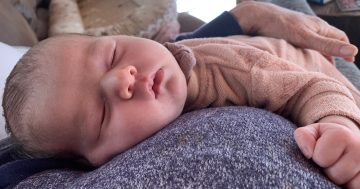
The first official estimates of Australia’s LGBTI+populations have been released. Photo: File.
For the first time in the nation’s history, there is an educated estimate of the size of Australia’s LGBTI+ populations.
The Australian Bureau of Statistics (ABS) has combined data from nearly 45,000 responses to its four recent health surveys to shed light on the LGBTI+ community.
Its results suggest about 740,000 Australians identify as lesbian, gay, bisexual or use a different term to describe their sexual orientation.
That’s 3.6 per cent of Australians. One in three LGB+ Australians are married or in a de facto relationship.
Nearly one per cent of Australians identify as trans and gender diverse. This includes trans men, trans women and non-binary people. That’s about 178,900 Australians.
Head of the bureau’s health statistics, Linda Fardell, said the new data showed about 4.5 per cent of all Australians 16 years and older were LGBTI+, equating to more than 900,000 people.
“Younger Australians are more likely to be LGBTI+. Nearly 10 per cent of Australians aged 16 to 24 years are LGBTI+,” she said.
“About 0.3 per cent of Australians report they know they were born with variations of sex characteristics – that’s around 63,300 people.”
These estimates only cover the Australian population aged 16 years and over. The figures, using the ABS Standard for Sex, Gender, Variations of Sex Characteristics and Sexual Orientation Variables, 2020, represent the bureau’s first published estimates of LGBTI+ populations and their demographic characteristics.
Data was collected via personal interviews with most obtained face-to-face with trained ABS interviewers.
Unlike some ABS surveys where adults can respond on behalf of other household members, respondents only answered questions on gender, sexual orientation and variations of sex characteristics about themselves. They could choose not to answer any question.
The 2026 Australian Census will include questions on gender and sexual orientation for people aged 16 years and over.
This will provide more detailed data by geography and population characteristics for LGB+ and trans and gender diverse populations in Australia.
LGBTI+ represents people who identify as lesbian, gay, bisexual or use a different term to describe their sexual orientation, trans and gender diverse, and people born with variations of sex characteristics.
The ABS acknowledges just as there are variations of the acronym LGBTI+, there are differences between the populations and individuals it represents. It also understands some respondents may have chosen not to identify as part of the LGBTI+ community.
The estimates and characteristics in the analysis are subject to limitations and error due to sample size and non-sampling error etc.
The data does not represent population benchmarks and the ABS insists it should be used with caution.
The Australian figures are similar to New Zealand’s 2023 Census data.
As in Australia, 3.6 per cent of New Zealanders identified as lesbian, gay, bisexual or use a different term to describe their sexual orientation. About 0.6 per cent of New Zealanders identified as trans and gender diverse.






















Dave Bishop I am sure he would believe he could 😉 View